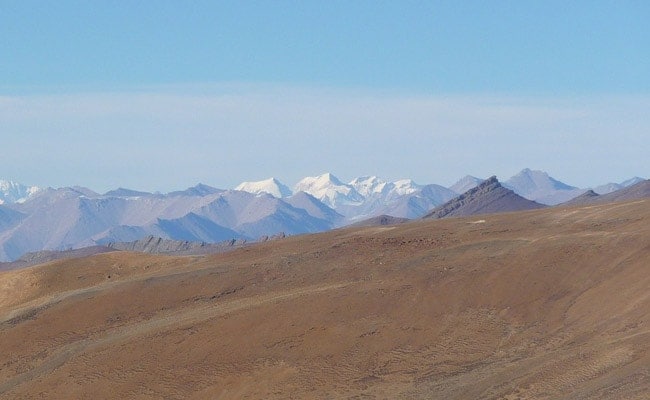Strategy framed after analyzing key challenges in all sectors
*3-C approach for holistic development, good governance
Mohinder Verma
JAMMU, Sept 17: In order to provide good governance to the people and ensure holistic development of the cold desert, the Union Territory of Ladakh has formulated a Vision Document for next 30 years with 3-C approach-Citizen Centric Development, 100% Connectivity and Clusters-based Decentralized Regional Development.
The Vision Document-2050 has been framed on the directions of the Lieutenant Governor R K Mathur after deeply analyzing the existing development deficit of both the districts of the Union Territory in comparison to other hilly areas of the country and key challenges which the cold desert is facing in all the vital sectors.
Moreover, for balanced growth of entire Union Territory, enough attention has been paid towards other regions as at present most of the development activities are concentrated in Leh and Kargil cities only.
As per the Vision Document-2050, the copy of which is available with EXCELSIOR, the Union Territory of Ladakh is lagging behind other hilly areas of the country in all the vital sectors like social welfare, human resource development, infrastructure, public health, industries and commerce and agriculture.
The intensity of development deficit and lack of good governance in the Ladakh UT can be gauged from the fact that 70% of the food demand is met by imports and the agriculture income is dependent upon merely 0.2% of total land area. Moreover, 54% settlements in the UT don’t have accessibility options and there is vast digital divide in telecom and Information Technology sectors with high access to digital services only in Leh and Kargil cities.
As far as basic amenities are concerned, 20% population has limited access to specialized healthcare and average time to reach a District/Sub-District Hospital is three hours. Similarly, there is 36% deficit in power supply with no supply of electricity for 30% of the day.
Likewise, there is 38% deficit in drinking water supply with limited access to piped water supply and 95% solid waste is disposed of untreated. Even there is limited access to higher education institutions.
The Vision Document has been framed in order to ensure sustainable agriculture development, thrust on Small and Medium Enterprises (SMEs) and investment promotion besides promotion of tourism sector. “The administration of Ladakh UT intends to ensure connectivity by all weather roads to all the settlements and green and sustainable public transport system”, reads the document.
A strategy has also been chalked out for 30 Giga Watts of power generation, promotion of clean energy, assured round the clock quality water supply to every house-hold, integrated Common Service Centres across the UT and access to specialized healthcare within one hour besides introduction of mobile medical units for on-demand healthcare.
Moreover, the Vision Document will help the administration in achieving the status of ‘Zero Waste Ladakh and waste to energy’ and introduction of smart education system with required focus on skill development and employability.
Actually, 3-C approach—Citizen Centric Development, 100% Connectivity and Clusters-based decentralized regional development will be adopted to translate Vision Document into reality.
In order to check rapid rural to urban transition, the administration will initiate steps to decentralize the developmental activities for balanced regional development. As most of the developmental activities are concentrated in Leh and Kargil cities, the Vision Document lays thrust on development of other regions also.
As far as agriculture and horticulture sector is concerned, strategy has been chalked out for development of clusters to produce high value crops in bulk, development of model organic villages and model farm marts, integration of organic farming with markets, value chains and trade and branding and marketing of organic products.
About industries and manufacturing sector, the Vision Document lays thrust on creation and sustenance of SME clusters with common infrastructure, dedicated freight network and way-side amenities and warehousing, strengthening of cooperative societies to support village level growth opportunities, investment attraction through marketing and promotion in domestic and international markets and adoption of technology centric breeding and rearing of animals for milk and wool.
As far as tourism sector is concerned, the UT intends to provide safe, secure and unique all weather tourism by creating an enabling environment for investments and promoting tourism diversification through theme based development. The focus will be on ensuring that sustainable tourism primarily benefits host communities.
The Vision Document also highlights the strategy which the administration of UT has chalked out for harnessing the potential of other renewable energy sources (wind and geothermal) and to establish micro grids for power supply to remote areas not connected to main grid.
As far as digital infrastructure is concerned, the Vision Document lays thrust on establishment of IT connectivity throughout Ladakh, integrated command and control centre at UT and district level, digitalization of Government departments like health, education and transport etc and implementation of all ICT Citizen Services.
As solid waste management sector has largely remained out of the focus till date as a result of which there is adverse impact on the environment of the cold desert, the Vision Document states that there will be sustainable integrated solid waste management system in urban areas with the establishment of plants for efficient treatment and disposal of waste.
There will be intelligent solid waste management for efficient waste management and monitoring besides enough awareness will be generated through different means for management of plastic waste at tourist locations. “The entire UT of Ladakh will get completely transformed with full attention on each and every aspect of Vision Document”, officials said, adding “different timelines will be fixed for action on the strategy chalked out for holistic development of UT”.


